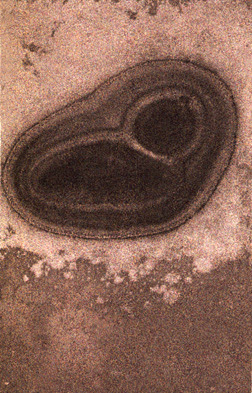(Franco Marinai, the New York-based photographer and printmaker, has written a guest post. We are happy to make the space available to him.)
 |
| Migliori, oxidization, 1948 |
It's 1948 - a momentous year - and the world is reeling from the disasters of WWII. The future is uncertain but in the relative obscurity of a darkroom in central Italy, a young photographer boldly sets off in two seemingly different directions: realism and experimentation.
As a neorealist photographer he would document Italy's transition from an agricultural to an industrial society with B&W essays that gained him considerable notoriety.
As an experimenter he would turn out to be a dedicated and steadfast destroyer of photographic conventions. Over the years he oxidized, cut, wrecked, scratched, burnt, and otherwise abused film, photographic paper, polaroids, and cliché-verres alike. This landed him squarely in the Italian pantheon of the photographic avant-garde (informal wing).
 |
| Migliori, oxidization, 1954 |
That the two practices could live together shouldn't be a surprise. It's certainly not a case of split personality. They are rather two aspects of the desire to get to the bottom of things, to get concrete, in other words to visualize reality, whether it has to do with some kids in the streets of Naples or with some unorthodox chemical reaction on photographic paper.
Nino Migliori started off his informal journey producing "oxidizations" - abstract images obtained off-camera by plying photographic paper with fixer and developer. They have an uncanny kinship with what later - in 1956 - would be called a "chemigram" by Pierre Cordier, its legitimate father.
The interplanetary alignment ends there.
 |
| Migliori, oxidization, 1954 |
Nino Migliori kept on a tangent - so to speak - to produce "pyrograms", "watergrams", "celluloid-grams", "photograms", "cliché-verres" and much more. It's a large and varied body of work that speaks loud for Migliori's unrelenting enthusiasm and voracious curiosity. In fact, the gist of his experimental work seems more about unrestricted dabbling than anything else. And this may be its strength. But given the volume and the nature of the images housed in innumerable museums and private collections in Europe and the US, one wonders whether he had any rejects. Did he discard any? And this may be another of Nino Migliori's strengths.
- Franco Marinai











Thanks Doug and Franco for introducing me (us) to this experimentalist in photo creation. There is a sense of explosive joy I see in the images you posted - especially the latter two. Perhaps related to the ending of a terrible war. But I suspect Migliori also took great joy in experimenting and pushing the limits to the unknown and, by definition, the unintensioned, with such lyrical results.
ReplyDeleteIn the way Migliori has prefigured some efforts of ours - and yours too, Norm - this post is the least we could do: he's been ignored by everyone who writes the histories we read, and in this he is not alone. Thanks to Franco for the meditative words and to Rich for 'discovering' him at a used-book sale in the country.
ReplyDelete